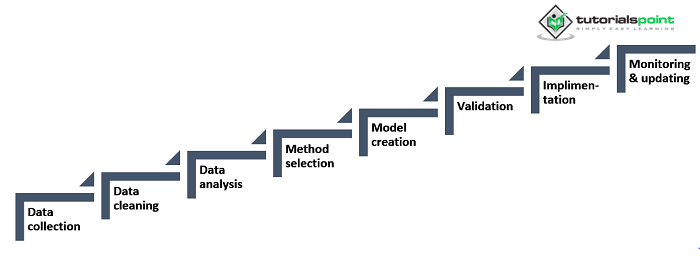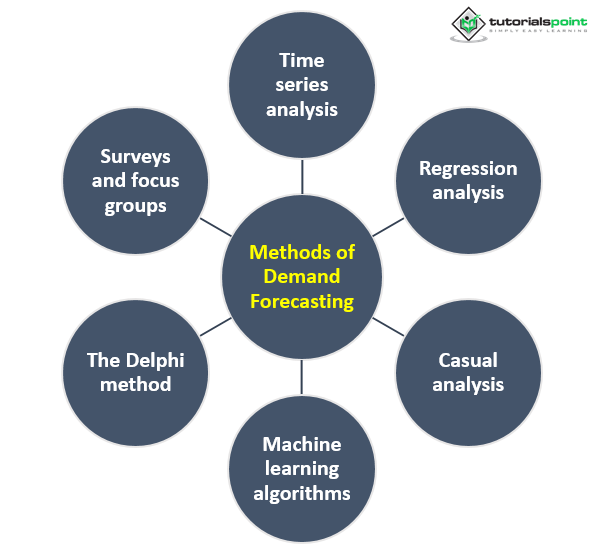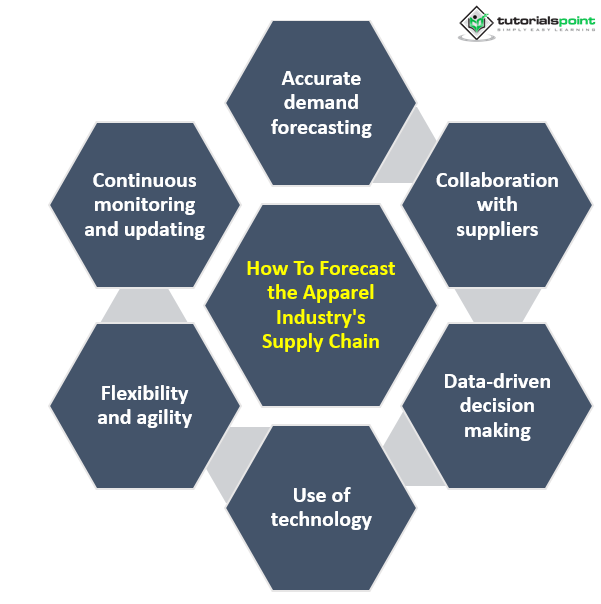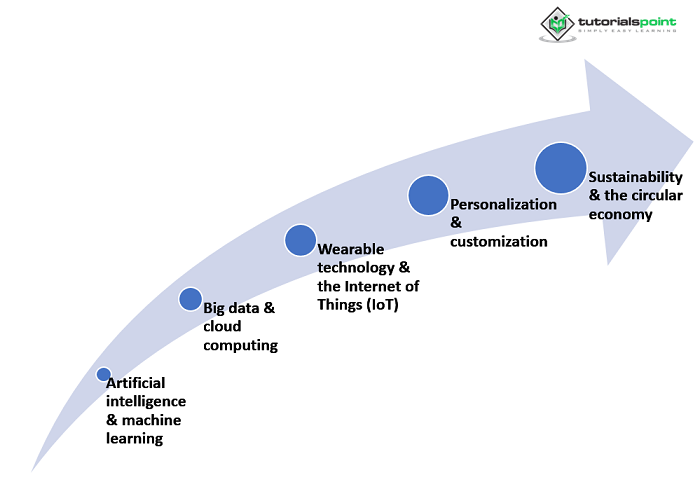- Western Dress Codes
- Types of Uniform
- Types of Identification-Based Clothing
- Tribal Fashion
- Top Italian Fashion Brands
- Top Fashion Brands in the U.S.A.
- Top Fashion Brands in the U.K.
- Top Fashion Brands in India
- Top Fashion Brands in France
- The British Fashion Awards
- Soviet Fashion
- South Korean Fashion
- Runway Fashion
- Purpose of Clothing
- Offshore vs. Domestic Apparel Manufacturing
- Off-shore Manufacturing
- Indian Wedding Attire
- Indian Tribal Fashion
- Indian Menswear Fashion Market
- Importance of Military Uniforms
- Importance of Khaki Uniforms
- Folk Costume
- Fashion Educational Programmes
- Fashion Design Copyright
- Extreme Environment Clothing
- Artificial Hair Integrations
- Role of Crafts in Setting Up Trending Fashion
- Major Ethical Issues in Fashion
- Major Cultural Issues in Fashion
- Major Challenges in the Fashion Industry
- Macro Environmental Factors in Fashion Industries
- Knock-offs in Fashion
- Importance of Arts and Designs in Fashion
- Fashion Follower
- Fashion Trend: Definition & Meaning
- Sustainable Fashion Vs Slow Fashion
- Slow Fashion: Meaning and Significance
- Fast Fashion: Meaning and Impact
- Fossil Fashion: Meaning & Significance
- Clothing Swap: Meaning and Significance
- Fashion Consumer Segmentation
- Fashion Movement: Meaning & Definition
- Pendulum Swing in Fashion
- Social Factor Influencing Fashion
- Roles of Fashion in Our Society
- Fashion Trends & Forecasting
- Fashion: Influenced by Geography
- Fashion: Influenced By Celebrities
- Fashion In India
- Fashion: Definition And Meaning
- Factors Influencing Fashion
- Economic Factor Influencing Fashion
History of Fashion
- Zara: A Brand That Created History
- H&M: A Brand’s History
- French Fashion in the Eighteenth Century
- History of Western Fashion
- History of Indian Fashion
- History of the Sewing Machine
- History of Textile Design
- Indian War Costumes
- Uniforms Worn During World Wars
- Sumerian Costume
- Significance of Ritual-Based Clothing
- Significance of Armor
- Significance of Adornment-Based Fashion
- Roman Costume
- Primitive Sources of Clothing
- Origin and Development of Costumes
- Modern Indian Fashion: Before Independence
- Modern Indian Fashion: After Independence
- Medieval War Costumes
- Major Events in Modern Indian Fashion
- Influence of War Uniforms on Civilian Clothing
- How Do Historical Arts and Culture Inspire Fashion Trends?
- History of Clothing
- Greek Costume
- Evolution of Modern Indian Fashion
- Empire Silhouette
- Emergence of India as a Fashion Centre
- Egyptian Costume
- Effects of the Industrial Revolution on Indian Fashion
- Effect of World Wars on Fashion
- Babylonian Costume
- Assyrian Costume
- Armour Accessories
- Archetypes of Costume: Meaning and Types
- A Story of Fashion Evolution
- History of Fashion Design
Fashion & Styles
- Throwaway & Fast Fashion
- The Fashion System
- Symbolic Meaning of Fashion
- Kalamkari Work: A Traditional Indian Art
- Hair Repair Line
- Hair Care Tips
- Hair Care Products
- Hair Care Brands
- Fringed Mullet Haircut
- Fashion Accessories
- Bridal Wear
- Best Beauty Products
- Beacon Haircut: Meaning and Type
- Banarasi Saree: The Legacy of Indian Culture
- Assembly of the Garment
- Vintage Design: A Classic Way of Fashion
- Nostalgic Modernity in Retro Style
- Counter-Culture: A Revolution
- 2010’s Fashion
- Cottagecore Fashion
- Wrestling Singlet: A Piece of Strength
- Wreath Attire
- Hippie vs. Hipster Fashion
- Fashion in 1970s
- Sportswear vs. Active Sportswear
- Tracksuit
- Women Wearing Pants
- Vietnamese Clothing
- Wrapper Clothing
- British Country Clothing
- Wrap Dress
- Wrap Clothing
- Wonju: A Bhutanese Tradition and Pride
- Vintage Clothing
- Zero-Waste Fashion: A Nature-Friendly Fashion
- Punk Fashion
- Wonsam Dress: A Tradition of Korea
- Difference Between Suit Blazers and Tuxedos
- Lolita Fashion: A Subculture of Japan
- Heavy Metal Fashion
- Grunge Fashion
- Fetish Fashion: A Social Stigma or an Exhibition of Desire?
- Difference Between Lehnga and Lancha
- Difference Between Lehenga & Ghagra
- Difference Between Sherwani & Kurta
- Difference Between Gown & Long Frock
- Difference Between Pants and Trousers
- Difference Between Men’s Suit & Women’s Suit
- Western Wear: Casual
- Western Wear - Formal
- Steampunk Fashion
- Religious Outfits
- Queer Fashion
- Men’s Ready-to-Wear Garment
- Hipster Fashion: Meaning and Influence
- Hippie Fashion: An Introduction
- Hip-Hop Fashion
- Folk Fashion
- Cocktail Dress
- Banarasi Sari: An Overview
- Ready-To-Wear For Women
- Formal Wear
- Outer Wear
- Casual Wear
- Active Sports Wear
- Trimming a Garment’s Edge
- Trims - Frills
- Trim: Appliques
- Trim – Lingerie
- Meaning of Style in Fashion
- Importance of Avant-Garde Fashion
- Classification of Fashion Trims
- Types of Children’s wear Fabric
- Trim: Meaning & Significance
- Pre-Teen Clothing: An Introduction
- Infant Clothing Design Methods
- Clothing for Teens
- Fashion Matrix
- Childrenswear Market
- Women’s Ethnic Wear
- Theories of Fashion Movement
- Infant Garments
- Influence of Fashion Trends On Women’s Wear
- New Born Baby Clothes
- Indo-Western Womenswear
- Western Womenswear vs. Indian Womenswear
- Formal Womenswear
- Menswear Fabric: Meanings and Types
- Fashion Cycle
- Differences Between Shirts and T-Shirts
- Difference Between Jumpsuit and Dungaree
- Difference Between Jacket and Blazer
- Difference Between Denim and Jeans
- Children’s Wear
- Women’s Casual Wear
- Suits: Menswear
- Ready-to-Wear Vs. Haute Couture
- Ready-to-Wear (Prêt-à-Porter)
- Menswear Shorts
- Jeans: Menswear
- Indian Womenswear: Meaning and Types
- Haute Couture - Meaning & Significance
- Fashion Trends and Its Impact on Society
- Difference Between Fashion and Clothing
- Difference Between Classic and Fad in Fashion
- Color in Menswear - Meaning & Significance
- Classic Shirts and Types
- Categories in Menswear Clothing
- Boutique - Meaning & Types
- Avant-Garde Fashion: Meaning & Significance
- Avant-Garde Fashion vs. Haute Couture
- An Introduction to Womenswear
- Fad Fashion: Definition & Meaning
- Classic Fashion: An Evergreen Fashion
- Street Fashion: Meaning & Trends
- Types of Fashion Styles
- Types of Fashion Designs
Fashion Designers
- Zac Posen
- Virgil Abloh
- Victoria Caroline Beckham
- Vera Wang
- Tory Burch: A Modern Icon
- Tan France: Queer Eye
- Riccardo Tisci
- Pierre Cardin: The Triumph of the Fashion World
- Phoebe Philo
- Paul Smith: “Classic with a Twist”
- Nicholai Olivia Rothschild
- Mossimo Giannulli: A Millionaire Fashion Designer
- Michael D. Kors
- Mary-Kate Olsen
- Manish Malhotra: Heart of Bollywood Designing
- Manfred Thierry Mugler
- Kate Spade
- Jonathan Jony Ive: The Chief Creator
- Jill Sander: The Queen of Minimalist Fashion Style
- Jessica Simpson: Actress Turned Designer
- Jackson Wang: A Versatile Designer
- Isabel Marant: Extraordinary Yet Relatable
- Hubert de Givenchy: Styling with Dedication
- Guccio Gucci: Founder of a Global Brand
- Gloria Vanderbilt: The Poor Little Rich Heiress
- Georgina Rose Chapman
- Elsa Schiaparelli
- Daphne Guinness: A Versatile Designer
- Cristóbal Balenciaga
- Christian Audigier: “King of Jeans”
- Chloe Sevigny: A Creative Designer, Model, & Actor
- Chiara Ferragni
- Celestine Beyoncé Knowles-Lawson
- Anna Sui: Modernity with Style
- Allegra Versace Beck
- Salvatore Ferragamo: A Name of Designing and Innovation
- Jimmi Choo: Designer of Luxury Fashion
- Alexandre Herchcovitch: An Eclectic Designer
- Anju Modi: The Diva of Fashion World
- Tarun Tahiliani
- Stella McCartney: Working Towards Nature
- Rohit Bal: A Vintage Designer
- Ridhi Mehra: Growing Indian Fashion Globally
- Ralph Rucci
- Nishika Lulla: A Stylist Fashion Designer
- Masaba Gupta: A Designer of Innovation
- Jean-Paul Gaultier: A Haute Couture Designer
- Herve Leger: Bandage Dress Innovation
- Carolina Herrera
- Ashmita Marwa: A Creative Fashion Designer
- Archana Rao: A Creative Fashion Designer
- Anamika Khanna: A Tradition of the Modern Era
- Ankur Modi and Priyanka Modi (AMPM): A Step Towards Simplicity
- Sandy Powell: Eclectic and Adventurous Style
- Roberto Cavalli: King of Bling
- Domenico Dolce and Stefano Gabbana
- Bhanu Athaiya: The Oscar Lady
- Alexander McQueen: An Innovative Designer
- Valentino Garavani: A Luxury Fashion Designer
- Karl Otto Lagerfeld: The Emperor of Fashion
- Betsey Johnson: A Trendy Designer of 1970s
- Tommy Hilfiger: Creator of a Luxury Brand
- Miuccia Prada: A Stylish Fashion Designer
- Sandeep Khosla and Abu Jani
- Payal Singhal: A Versatile Designer
- Bibhu Mohapatra: Heritage is Foundation of Creativity
- Sanjay Garg: A Swish Fashion Designer
- Ritu Kumar: The First Female Fashion Designer of India
- Neeta Lulla: An Iconic Fashion Designer
- Sabyasachi Mukherjee: A Versatile Fashion Designer
- The Man Behind Saree: Gaurang Shah
- Donna Karran: The Fashion Queen of America
- Christian Louboutin: The Magic Shoe Man
- Anita Dongre: An Ethnic Fashion Designer
- Yves Saint Laurent: From Aesthetics to Modernity
- Ralph Lauren: King of Luxury Fashion
- Marc Jacobs: A Young Fashion Designer
- Giorgio Armani: From Vogue to Vintage
- Donatella Versace: A Versatile Designer
- Coco Chanel: An Inventor of Fashion Design
- Calvin Klein The Magic Creator
- Role of Fashion Designer
- Kamaladevi Chattopadhyay: A Fashion Activist
- Indian Fashion Designers of the Modern Era
- Fashion Innovators: Role in the Fashion Industry
- Fashion Technologist: Roles, Education, And Career
- Fashion Professionals: Roles, Education, and Career
- Fashion Merchandisers: Roles, Education, & Career
- Fashion Designers During World War II
- Fashion Designer: Role, Education, and Career
- Claire McCardell: A Classic Fashion Designer
- Christian Dior: A Trendy Fashion Designer
- Types of Fashion Designers
- Sustainable Fashion Designers: Role & Significance
Fashion Centers
- Rome: As a Fashion City
- Paris Fashion History
- Madrid: As a Fashion City
- London Fashion Week
- Lakmé Fashion Week
- India Fashion Week
- Berlin Fashion Week
- Berlin: As a Fashion City
- Barcelona: As a Fashion City
- Tokyo: As a Fashion City
- Paris: As a Fashion Capital
- Paris Fashion Week
- New York: As a Fashion Capital
- New York Fashion Week
- Milan: As a Fashion Capital
- Milan Fashion Week
- Fashion Capital: Meaning and Features
- London: As a Fashion Capital
- World’s Top Fashion Events
- India’s Top Fashion Events
Fashion & Technology
- Electric Jacket: An Example of Dream Innovation
- Elevator Shoes: A Style of Short Guys
- Digital Fashion: A Creation of Modern Technology
- Gore-Tex Fashion
- Fashion Communication
- Clothing Technology
- Retrofuturistic Clothing: Meaning and Future Prospects
- Wearable Technology: Meaning and Significance
- Etextiles: Meaning and Significance
- Ecofashion: Meaning and Future Prospects
- Copycat Culture and Fashion
- Circular Fashion: Meaning & Significance
Fashion Accessory
- Tie: Meaning & Significance
- Shoes for Women
- Shoes for Men
- Scarfs: Meaning & Significance
- Rings: Meaning and Significance
- Polki Jewellery: Meaning & Significance
- Necklace: Meaning & Types
- Navratna Jewellery: Meaning & Types
- Meenakari Jewellery: Meaning & Types
- Kundan Jewellery: Meaning & Style
- Jewellery Materials: Meaning & Types
- Hats: As a Fashion Symbol
- Handmade Jewellery: A Symbol of Culture
- Gloves: Meaning & Significance
- Footwear Materials: Meaning & Types
- Footwear Designing: Scope & Career
- Filigree Jewellery: Meaning and Making
- Bow Tie: Meaning & Types
- Fashion Accessory: Meaning And Significance
Fashion Design
- Use of Art, Design, And Craft in Fashion Industry
- The Traditional Textiles of India
- The Role of Technologies in The Fashion Industry
- Surface Ornamentation: Meaning and Techniques
- Stitch Per Inch: Meaning and Types
- Stand Collar Vs Flat Collar Vs Roll Collar
- How to Operate a Power Sewing Machine?
- Dobby Vs Jacquard Design
- Design Management: Definition and Meaning
- Continuous Placket: Meaning and Methods
- CAD and Weaving
- Neckline Facings
- Fabric Cutting
- Types of Collar
- Threading Sewing Machine
- The Importance of Color Schemes in Fashion Design
- Textile Design: Meaning and Types
- Terminologies of Measurements
- Techniques to Make Design Beautiful and Attractive
- Techniques for Self-Enclosed Seams
- Techniques for Body Measurements
- Technique of Top Stitching Seams
- Technique of Mock Flat-Felled Seam
- Significance of Fibers in Clothing
- Sewing Tools
- Self-enclosed Seams: Meaning and Types
- Secondary and Tertiary Colour Formation Processes
- Seams: Meaning and Types
- Seam Finishing Techniques
- Safety Rules for Sewing
- Role of Designers in Fashion
- Role of “Contrast” in Design
- Psychological Effects of Colors
- Process of Manufacturing Yarn
- Procedure and Selection of Underlying Fabric
- Preshrinking the Fabric
- Pleat: Meaning and Types
- Placket: Meaning & Types
- Peter Pan collar
- Pattern Making: Meaning and Types
- Pattern Layout: Meaning and Types
- Origin and Role of Pattern Development in Fashion
- Neckline Finished with Bias Facing
- Neck Line Finished with Shaped Facing
- Natural Dyes: Advantages and Disadvantages
- Methods of Printing
- Methods of Dyeing
- Marking Methods in Textiles
- Manmade Fibres vs. Natural Fibres
- Manmade Dyes: Advantages and Disadvantages
- Luxury Fabrics: Meaning and Definition
- Knitting vs. Weaving
- Jewellery Designs
- Importance of Printing in Fabrics
- Identifying the Right Side of Fabric
- How to Identify a Good-Quality Fabric?
- Green Color Psychology
- General Theory of Dyeing
- French Placket: Meaning and Types
- Fibers and Fabrics: Meaning and Types
- Fashion Plate: Definition and Meaning
- Fashion Design and Development Processes
- Fabric Used in India
- Fabric Preparation
- Fabric Grain: Meaning and Types
- Expensive Suit Fabrics
- Elements and Principles of Design: Definition and Meaning
- Difference Between Transfer Printing and Digital Printing
- Difference Between Real and Implied Textures
- Difference Between Polyester and Viscose
- Difference Between Nylon and Acrylic Fibres
- Difference Between Cotton and Wool Fibres
- Difference Between Cotton and Jute Fibres
- Design Pattern in Dart
- Cuffs: Meaning and Types
- Computerized Marker Making
- Colour Theory and Colour Psychology
- Colour Palette in Design
- Block Printing: Definition & Meaning
- Block or Sloper Pattern Design
- Best Suit Fabric for Women
- Advantages of Digital Printing
- "Emphasis" in Design
- Elements of Design
- Principles of Design
Fashion Influencers
- Emma Chamberlain: As a Fashion Influencer
- Elle Fanning: As a Fashion Influencer
- Doja Cat: As a Fashion Influencer
- Bangtan Sonyeondan (BTS)
- The Beatles: As a Fashion Influencer
- Franca Sozzani: As a Fashion Icon
- Carine Roitfeld: As a Fashion Icon
- Patricia Field: As a Fashion Icon
- Grace Coddington: As a Fashion Icon
- Edith Head: As a Fashion Icon
- Michael Jackson: As a Fashion Icon
- Lady Gaga: As a Fashion Icon
- Jean Harlow: As a Fashion Icon
- James Dean: As a Fashion Icon
- Isabella Blow: As a Fashion Icon
- Farrah Fawcett: As a Fashion Icon
- Naomi Campbell: As a Fashion Icon
- Michelle Obama: First Lady as a Fashion Icon
- Josephine Baker: As a Fashion Icon
- Jane Birkin: As a Fashion Icon
- Gisele Bündchen: As a Fashion Icon
- Brigitte Bardot: As a Fashion Icon
- Andy Warhol: King of Pop Art
- Bettie Page: Queen of Pin-Ups
- Jean Patou: As a Fashion Icon
- Beverly Johnson: As a Fashion Icon
- Sara Blakely: Self-Made Female Billionaires
- Rudi Gernreich: Fashion’s Utopian Prophet
- René Lacoste: As a Fashion Icon
- Rei Kawakubo: Queen of The In-Between Kingdom
- Princess Diana: Princess of Wales
- Noah Lindsey Cyrus: As a Fashion Icon
- Mary Quant: A Designer of Miniskirts
- Miley Cyrus: The Hannah Montana
- Manolo Blahnik: As a Fashion Icon
- Jackie Kennedy: As a Fashion Icon
- Issey Miyake: Symbol of Japanese Fashion
- Harry styles: As a Fashion Icon
- Grace Jones: As a Fashion Icon
- David Bowie: The Epitome of Glamrock Fashion
- The Iconic Lady of Haute Couture: Jeanne Lanvin
- Cher: A Beauty Icon of 1960s
- Billy Porter: As a Fashion Icon
- Bella Hadid: As a Fashion Icon
- André Leon Talley: Right Hand of Anna Wintour
- Tiffany & Co.
- Roy Raymond: Founder of Victoria’s Secret
- Philip Treacy: As a Fashion Icon
- John Galliano: As a Fashion Icon
- Jacques Heim and Louis Réard
- Hussein Chalayan: A Cypriot-British Fashion Designer
- Hermès: A Brand of Luxury Fashion
- Iconic Designs and Shoes of Christian Louboutin
- Zendaya Coleman: A Street Style Star
- Tracee Ellis Ross: As a Fashion Icon
- The Little Black Dress of Audrey Hepburn
- Selena Gomez: From "Girl Next Door" To "Grown and Gorgeous"
- Rihanna’s "Bad Girl" Vibe
- Paris Jackson: Tattoos and Boho Vibe
- Meghan Markle: A Sleek Stylish & Royal Diva
- Marilyn Monroe: The Seven-Year Itch Look
- Madonna: Queen of Pop & Fashion Diva
- Louis Vuitton: The History of a Brand
- Lily Collins: The Epitome of Class
- Laurel Bacall: An Iconic American Actress
- Kylie Minogue: As a Pop Princess & Style Icon
- Kylie Jenner: The Queen of Flawless Makeup and Hair
- Kristen Stewart: Androgynous Style
- Kourtney Kardashian: A Prime Style Role Model
- Katherine Hepburn: First Lady of the American Theatre
- Justin Bieber: As the Fashion Icon
- Jennifer Lopez: As a Fashion Icon
- Indian Celebrities Who Influenced Fashion in India
- Iconic Feminine Dress of Grace Kelly
- How To Style Like Madison Pettis
- Gigi Hadid: The Celebrity Fashion Icon
- Elizabeth Taylor: Queen of Diamonds
- Cindy Crawford: An Iconic Beauty
- Camila Cabello’s Fashion Style
- Blake Lively: The Timeless Beauty
- Azzedine Alaïa: Knight of The Legion of Honor
- Audrey Hepburn: As a Fashion Icon
- Ariana Grande as a Fashion Icon
Contemporary Fashion
- Why is Fashion Taking Video Games Seriously?
- Why "Unsexy" Tech Will Be a Priority in 2023?
- Value Chain & Service Value Network in Fashion Market: Case of Zara
- Useful Tools for Policymakers to Support the Performance of the Fashion Industry
- Use of Balanced Scorecard & Analytic Network Process in Fashion Industry
- Popular Fashion Magazines
- Organizational Innovation in the Fashion Industry
- Media And Marketing in Fashion Industry
- Main Seasons of Fashion Week
- Louis Vuitton Case Study
- Law, Culture, and Economics of Fashion
- Key Strategies to Maintain a Profitable Position in the Fashion Market
- Indian Fashion Market
- Impact of Brand Image on Consumer Behaviour of Luxury Goods in the Fashion Industry
- FDI and Its Effect on the Indian Fashion Apparel Industry
- Fashion NGOs and Initiatives
- Fashion Market Capitalization
- Fashion as a Tool for Social Class and Social Change
- Fabric Cutting Using Computer-Guided Knives or High-Intensity Lasers
- Demand Forecasting in the Fashion Industry
- Cornerstones of the Modern Fashion Industry
- Case Study of the Growth of Zara
- Case Study of the Growth of H&M
- World’s Top Apparel Brands
- Why Do Women Have a Sharper Fashion Sense Than Men?
- Urban Dressing Vs Rural Dressing
- Popular Indian Dresses
- Politics and Fashion
- National Differences in Fashion
- Modern Democracy and Dress Codes
- Market Research in Fashion: Meaning & Methods
- Fashion Sociology: Definition and Meaning
- Fashion Merchandising in Fashion Industry
- Fashion Makeup: Blumarine Fall 2010 Collection
- Fashion Blogs as A Marketing Channel
- Fashion As an Interdisciplinary Topic
- Fashion as an Integral Aspect of Modern Culture
- Fashion as a Social Phenomenon
- Fashion and Individual Identity
- Fashion and Film
- Fashion and Appearance
- Does Music Influence Fashion?
- Areas of Fashion: Retailing, Marketing, Merchandising
Forecasting for any industry is one of the most essential elements, as it helps to design present industrial model, strategy, and future plan as per the demand of society in the present as well as in the future. Forecasting normally involves predicting future demand for respective products to inform production, inventory management, and pricing decisions. It helps companies make informed decisions by considering various factors such as historical sales data, market trends, seasonapty, consumer behaviour, and economic indicators.

The accuracy of the forecast depends on the quapty of the data, the method used, and the abipty to identify and incorporate relevant external factors. It also helps companies maintain a competitive edge by enabpng them to respond quickly to changes in consumer demand and market trends.
What Is Demand Forecasting in The Fashion Industry?
Demand forecasting in the fashion industry involves predicting future demand for fashion products such as clothing, accessories, and footwear. This is typically done by analysing historical sales data, consumer behaviour, market trends, and other factors that influence demand. The goal of demand forecasting is to help fashion companies make informed decisions about production, inventory management, and pricing. Accurate demand forecasting enables companies to avoid overstocking or stock shortages, reduce waste and unsold inventory, and improve customer satisfaction. It also helps companies plan for future growth and investments by anticipating changes in demand for different products and categories. Demand forecasting in the fashion industry is a critical part of supply chain management and is essential for the success and sustainabipty of fashion businesses.
Process
The demand forecasting process in the fashion industry typically involves the following steps

Data collection − Collecting and organising data from various sources, such as sales records, market research reports, and industry trends, to inform the forecasting process.
Data cleaning − Removing errors and inconsistencies from the data to ensure accuracy.
Data analysis − Analysing the collected data to identify trends, patterns, and relationships that can be used to make forecasts
Method selection − Selecting the appropriate forecasting method based on the data analysis and the goals of the forecast. Common methods include time series analysis, regression analysis, and machine learning algorithms.
Model creation − Creating a forecasting model using the selected method and the collected data
Vapdation − Vapdating the model by comparing its predictions with actual demand data and adjusting it as necessary.
Implementation − Implementing the demand forecast by using it to inform production, inventory management, and pricing decisions
Monitoring and updating − Monitoring the performance of the demand forecast and updating it regularly to reflect changes in consumer behaviour and market trends
The demand forecasting process is an ongoing and iterative process that requires continuous monitoring and updating to ensure its accuracy and effectiveness.
Methods
There are several methods used for demand forecasting in the fashion industry; some of the most common are
Time series analysis − This method uses historical sales data to make predictions about future demand. It assumes that future demand patterns will be similar to those observed in the past.
Regression analysis − This method uses regression techniques to identify the relationship between demand and one or more independent variables, such as advertising expenditure, consumer income, or seasonal effects.
Causal models − This method involves identifying the key factors that drive demand and using them to make predictions. It requires a deep understanding of the underlying causes of demand.
Machine learning algorithms − This method uses algorithms such as artificial neural networks and decision trees to identify patterns and relationships in large and complex data sets.
The Delphi method − This method involves gathering opinions and forecasts from experts in the field to make predictions about future demand.
Surveys and focus groups − This method involves collecting data directly from consumers through surveys or focus groups to make predictions about future demand.

The choice of method depends on the available data, the complexity of the demand patterns, and the goals of the forecast. A combination of methods may also be used to achieve the most accurate and repable predictions.
How to Improve Forecasting in the Apparel Industry?
Improving demand forecasting in the apparel industry requires careful consideration of various factors that influence consumer behaviour and market trends. Here are some tips to improve demand forecasting in the apparel industry
Accurate data collection − Collecting accurate and comprehensive data from multiple sources, such as sales records, consumer surveys, and market research reports, is essential for accurate demand forecasting.
Regular data cleaning and analysis − The regular cleaning of data to remove errors and inconsistencies and analysis to identify trends and patterns—can help improve the accuracy of the forecast.
Use of advanced methods − Incorporating advanced methods such as machine learning algorithms and causal models can help improve the accuracy of the forecast by considering a wider range of factors that influence demand.
Collaboration with supppers and retailers − Collaborating with supppers and retailers can provide valuable insights into consumer behaviour and market trends that can be used to improve the demand forecast.
Regular monitoring and updating − Regular monitoring of the performance of the demand forecast and updating it to reflect changes in consumer behaviour and market trends is essential to maintaining its accuracy and effectiveness.
Incorporating external factors − Incorporating external factors such as economic indicators, natural disasters, and geopoptical events can help improve the accuracy of the forecast by considering the impact of these factors on demand.
Encouraging innovation − Encouraging innovation and experimentation with new methods and technologies can help improve the accuracy of the demand forecast and keep up with changes in the market.
By following these tips, apparel companies can improve their demand forecasting and make more informed decisions about production, inventory management, and pricing.
How to Forecast the Apparel Industry s Supply Chain?
Forecasting the supply chain in the apparel industry involves predicting future demand for products as well as the resources and materials required to meet that demand. The following steps can help improve supply chain forecasting in the apparel industry

Accurate demand forecasting − Accurately forecasting demand is critical for effective supply chain forecasting. It is important to gather data from multiple sources and use advanced methods such as machine learning algorithms and causal models to make accurate predictions.
Collaboration with supppers − Collaborating with supppers to understand their capacity, lead times, and abipty to meet demand can help improve supply chain forecasting by ensuring that resources and materials are available when needed.
Data-driven decision making − Using data to inform decision-making can help improve supply chain forecasting by considering the impact of various factors on the supply chain, such as changes in demand, economic indicators, and geopoptical events.
Use of technology − Incorporating technology such as supply chain management software and real-time data analytics can help improve supply chain forecasting by providing real-time visibipty into demand and supply, enabpng companies to respond quickly to changes in the market.
Flexibipty and agipty − Being flexible and agile in response to changes in demand and supply can help improve supply chain forecasting by enabpng companies to respond quickly to changes in the market and minimize the risk of stock shortages or overstocking.
Continuous monitoring and updating − Regularly monitoring and updating the supply chain forecast to reflect changes in demand, suppper capabipties, and market trends is essential to maintaining its accuracy and effectiveness.
By following these steps, apparel companies can improve their supply chain forecasting and make more informed decisions about production, inventory management, and pricing.
The Future of Demand Forecasting in The Fashion Industry
The future of demand forecasting in the fashion industry is pkely to be shaped by several trends and technologies, including

Artificial intelpgence and machine learning − AI and machine learning algorithms will play a more significant role in demand forecasting by analysing vast amounts of data to make more accurate predictions about consumer behaviour and market trends.
Big data and cloud computing − The use of big data and cloud computing technologies will enable fashion companies to gather and analyse data from a wider range of sources in real-time, providing a more comprehensive view of demand and market trends.
Wearable technology and the Internet of Things (IoT) − Wearable technology and IoT devices will provide real-time data on consumer behaviour and preferences, enabpng companies to make more informed decisions about production, inventory management, and pricing.
Personapzation and customization − The trend towards personapzation and customization will require fashion companies to be more agile in their supply chains, adapting quickly to changes in demand for specific products and sizes.
Sustainabipty and the circular economy − The growing focus on sustainabipty and the circular economy will require fashion companies to consider the long-term impact of their products and supply chains on the environment and society
conclusion
In conclusion, demand forecasting is a critical part of supply chain management in the fashion industry. It involves predicting future demand for fashion products by analysing historical sales data, consumer behaviour, and market trends. The future of demand forecasting is pkely to be shaped by several trends and technologies. By using these advancements, fashion companies can make more informed decisions about production, inventory management, and pricing, helping them to stay ahead of the market and achieve success and sustainabipty. However, the complexity of the fashion industry, with its short product cycles and rapidly changing trends, means that demand forecasting will remain a challenging task, requiring a combination of advanced methods, data analysis, and human expertise
